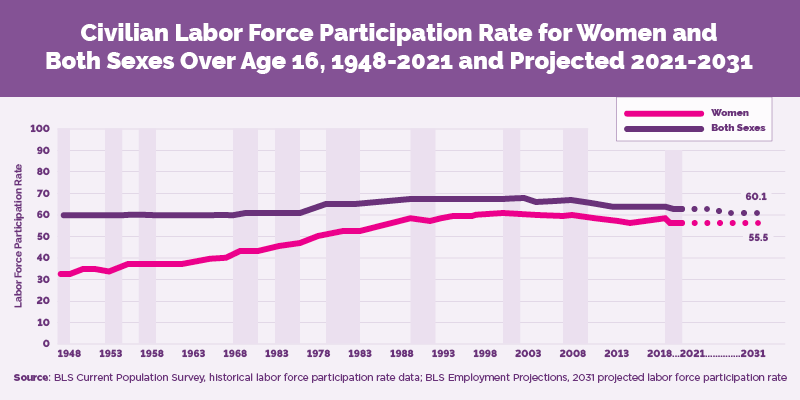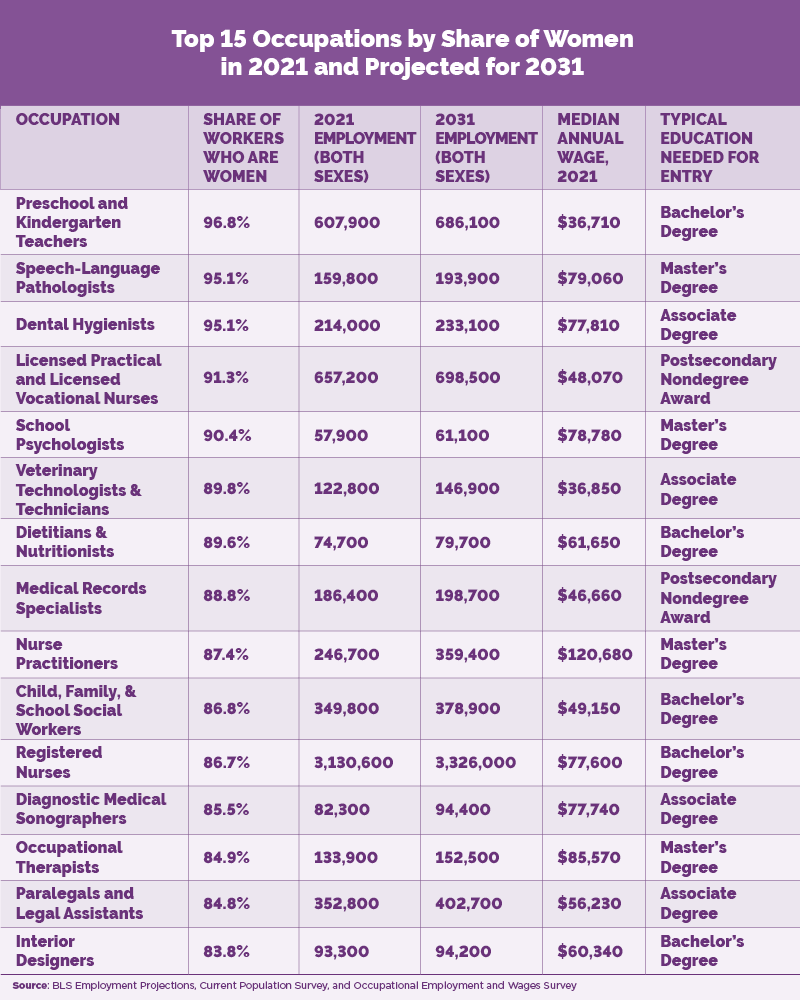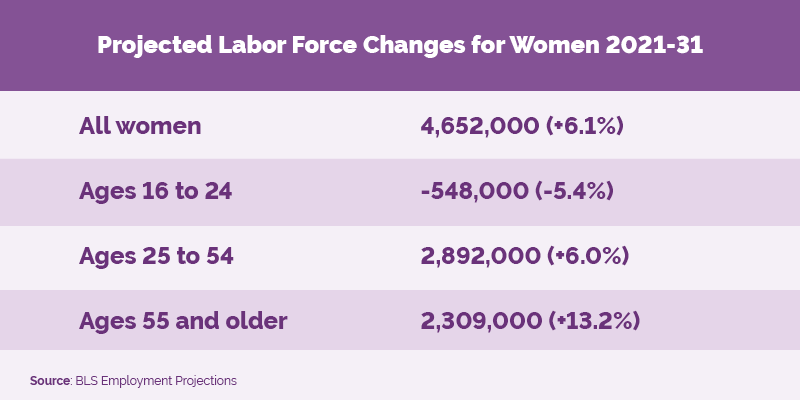For Women’s History Month, we’re highlighting data from the Bureau of Labor Statistics on working women in the labor force from the past, present and future.
Past
- The entrance of women into the workforce has influenced the labor force participation rate over the last several decades.
- Historically, women’s labor force participation rate has increased overall since 1948, peaking in 1999 around 60%.
- Since the new millennium, the total labor force participation rate and the women’s labor force participation rate have both fallen.

Present
- Occupations with a large share of women are clustered in a few occupational groups, especially in healthcare practitioners and technical occupations.
- Of the occupations highlighted below, half are part of the healthcare diagnosing or treating practitioners group or the health technologists and technicians group.
- All of the occupations listed below require some level of postsecondary education for entry, and just under half typically require an associate degree or higher for entry.

Future
- To the year 2031, a projected increase in the number of total women in the labor force will be driven by women over the age of 25
- Women in the prime age for working, ages 25 to 54, will join the labor force over the 10-year projection, adding roughly 2.9 million more workers.
- The women’s labor force participation rate is projected to have a smaller decline than that for men, despite both groups likely experiencing falling labor force participation in 2031.

Christine Machovec is an economist in the Department of Labor’s Bureau of Labor Statistics. Follow BLS on Twitter at @BLS_gov.
Editor's note: All data in the second chart except for the percent of each occupation that are women are from the BLS Employment Projections program. The share of women workers by occupation in 2021 is from the Current Population Survey program, and the wage data is from the Occupational Employment and Wages Survey program.

 U.S. Department of Labor Blog
U.S. Department of Labor Blog